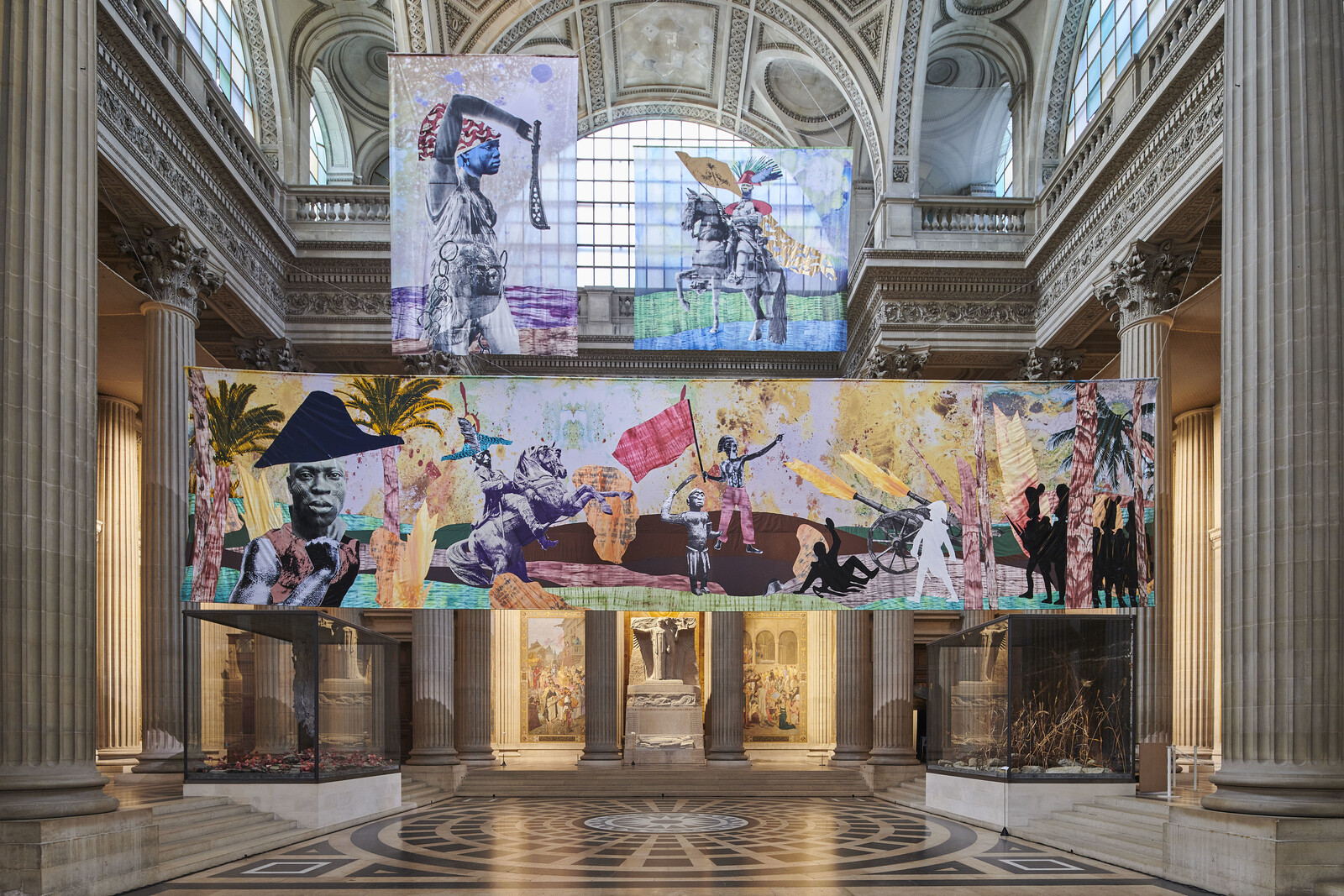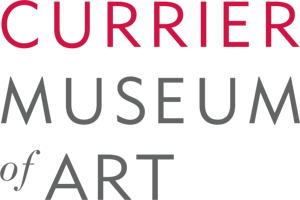I live a journey of a thousand years
March 7–June 23, 2024
150 Ash Street
Manchester, New Hampshire 03104
United States
Hours: Wednesday–Sunday 10am–5pm
T +1 603 669 6144
visitor@currier.org
The Currier Museum of Art is delighted to announce I live a journey of a thousand years, a new exhibition of the work of French artist Raphaël Barontini (b. 1984, St. Denis, France) opening in March 2023. The title paraphrases a passage from the poem Calendrier lagunaire, published in 1982 by the late Martinican author and politician Aimé Césaire, which reads: “I dwell in a thousand-year journey.” This is a journey that Barontini feels he is living himself, alongside those whose life experiences result from uprooting and displacement, and whose identities have been forged by encounters with other cultures through processes of creolization. These processes were described by Martinique-born French philosopher Édouard Glissant as a complex entanglement of different cultures forced into cohabitation, as in the case of the Antilles and other countries in the Caribbean.
Barontini’s mother hails from the French West Indies, and so he is himself the product of such entanglement, which is further complicated by his European heritage. His work is an endless journey of self-discovery and historical excavation. Suspended between multiple fractured identities, Barontini continuously attempts to blur these lines—culturally, geopolitically, and historically. His work often surfaces the silenced stories of militants and freedom fighters, whom he celebrates as heroes mimicking and infiltrating the Western art canon and its representational and ceremonial modalities.
“I work daily with history and its past visual manifestations,” says Barontini. “These materials provide me with a framework. My practice is centered on storytelling and opening a dialogical space for interrogating our past […] The era of the triangular trade has interested me for a long time, because it is a pivotal moment in history. Its impact on the geopolitical, economic, and cultural relations between Europe, Africa, and the Americas persists. This painful historical juncture is also the breeding ground for an exceptional creolized culture, which turned the arts upside down. My work addresses these issues—but is primarily concerned with imagination.”
The resulting imagery combines diverse references in a visual collage that perfectly exemplifies Glissant’s definition of the term “creole”: a cultural hybrid that is a blending of different cultural, linguistic, and social elements in a region. Similarly, Barontini’s work combines multiple references, resulting in images that are both familiar and arrestingly novel. His mixed-media technique and practice are equally layered and complex.
The exhibition comprises about twenty works and is Barontini’s largest presentation to date at a US institution. Closely following the commission entitled We Could be Heroes at the Panthéon in Paris—part of the Carte blanche series organized by France’s National Monuments Center—the exhibition at the Currier features La Bataille de Vertières (2023) as its centerpiece, a monumental 65-foot-wide painting that first premiered inside the Panthéon and will be on view in the US for the first time. The work is complemented by recent work from US private collections and several new pieces created specifically for the Currier Museum.
This exhibition is generously supported by M. Christine Dwyer and Michael Huxtable.
Currier Museum of Art
The Currier Museum is an internationally renowned art museum located in Manchester, New Hampshire. The museum features paintings, sculpture, decorative arts, and photographs, including works by Claude Monet, Pablo Picasso, Georgia O’Keeffe, Edward Hopper, and Andrew Wyeth. It presents exhibitions, tours, art classes, and special programs year-round. The museum also owns two houses designed by Frank Lloyd Wright.





